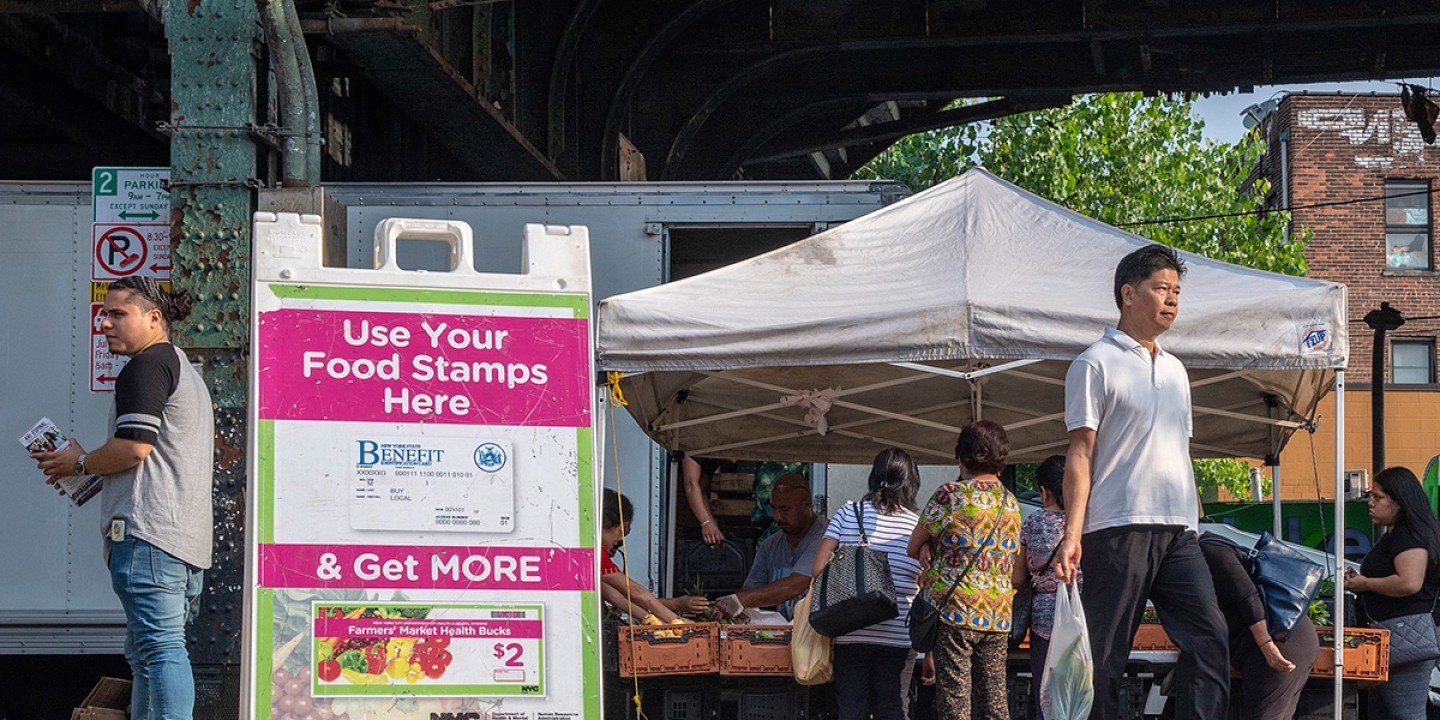The recent increase in SNAP benefits was long overdue
Food stamps may be the most effective tool we have for fighting domestic poverty.

The general dysfunction in Washington continues. The Republican minority shows little interest in the responsibilities of governance, while the Democratic majority is too thin and too fractious to attend to them alone. It’s hard enough for this Congress to fund the government’s basic functions and pay its bills, let alone enact new solutions to the multiple crises the nation faces.
In such a climate, it’s easy not to notice when some small good thing is accomplished by the federal government. Last month, the US Department of Agriculture increased the benefits available through the Supplemental Nutrition Assistance Program, also known as food stamps. SNAP is perhaps the federal program most effective at mitigating poverty across generations.
Read our latest issue or browse back issues.
SNAP’s overall parameters are set by Congress every five years in the farm bill. What the USDA did was update its “thrifty food plan,” which details the specific grocery needs for SNAP recipients. These updates amount to an average benefits increase of 40 cents per person per meal.
This was long overdue. The old standards, devised in the 1960s, embodied some outdated assumptions about how family meals get prepared. (“If you are poor enough for food stamps,” wrote Jeffrey Steingarten in a 1993 article about his efforts to live on the thrifty food plan, “it is assumed you will have all the time in the world to cook everything from scratch.”) Other anti-hunger programs, such as local food banks, have struggled for years to keep up with the need—a problem that’s been significantly exacerbated during the pandemic. Since early last year, food insecurity has gone up around the country, by as much as 25 percent in some counties.
SNAP fights poverty by directly meeting a basic need. And because it’s an entitlement program—meaning that Congress sets only its benefits and eligibility standards, not an overall spending cap—the program grows to meet the growth of that need. When a bad economy leaves more Americans hungry, SNAP is there to help feed them.
This also helps the overall economy recover. SNAP benefits are a terrific form of fiscal stimulus—both because they grow to keep pace with the problem and because people don’t stash them away or use them to pay off debt. They buy food with them, injecting money into food production and distribution networks. SNAP accomplishes a lot, on multiple fronts.
SNAP recipients badly need this increase—especially since a separate increase, passed early in the pandemic as an emergency measure, expired last month. A larger expansion of the program is needed as well—to address the shameful reality of people going hungry in a nation with more than enough food. Such an expansion can’t be done unilaterally by the USDA; it will have to come from Congress.
Still, the recent change to SNAP is an important reminder. Even when Congress and the White House are at loggerheads, unable to find the path to so much as keep the lights on, it still matters who runs the federal agencies—and what they see as their mission. They are in a position to do measurable good for people who need it.
A version of this article appears in the print edition under the title “A step forward against hunger.”





